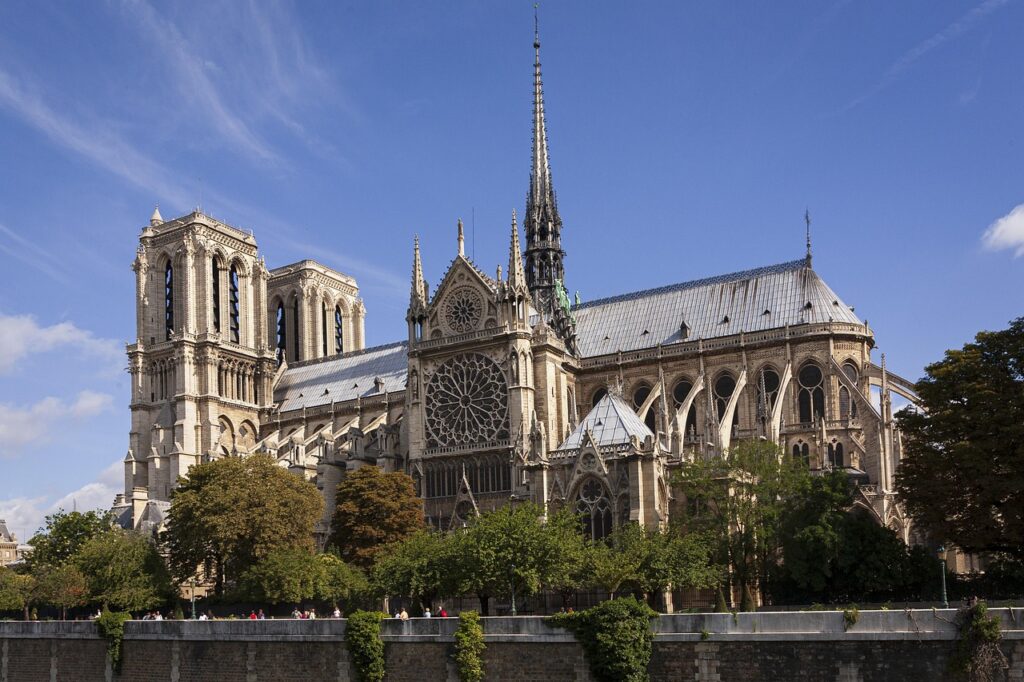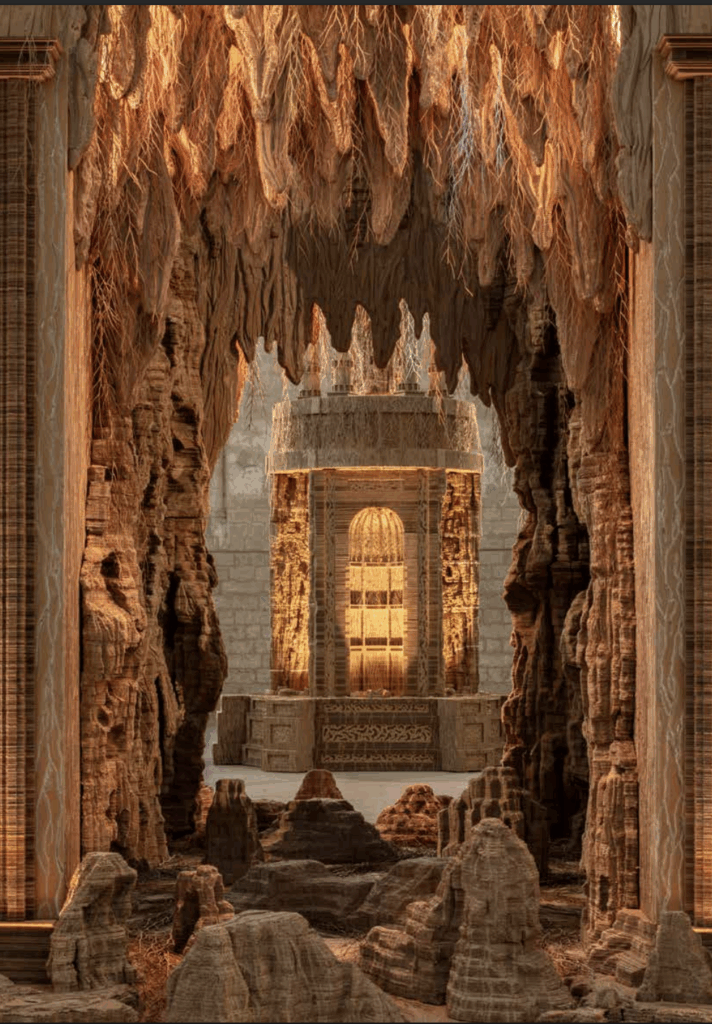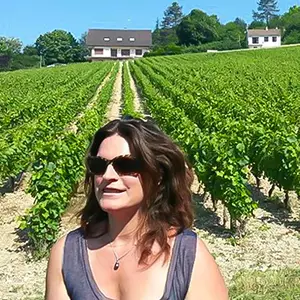Claire Tabouret just won the commission to design Notre-Dame’s new stained-glass windows. And right now, before the cathedral is rebuilt, you can see exactly how she thought her way through it—every sketch, every model, every decision. It’s at the Grand Palais.
That alone is worth the trip. But she’s not alone there.
The Grand Palais just reopened after its Olympic renovation. For years it was closed. Now it’s activated, and the first major winter season is three concurrent exhibitions—each museum-quality, each requiring serious time. This isn’t a manufactured convergence. It’s real circumstance: the Centre Pompidou is closed for renovation, so its drawing collection is traveling. Tabouret’s Notre-Dame work exists in this specific window. Jospin’s Grottesco was built for this space.
When you talk to people at the Grand Palais, there’s no overselling. The attitude is simple: we have three significant shows. We’re giving them the space they deserve. The work speaks for itself, inviting you to see it on its own terms.
Claire Tabouret: The Only Place to See a Cathedral Being Reimagined

Notre-Dame caught fire in 2019. The world watched it burn. Now, as it heals from that devastating fire, France had to make a decision: who gets to create something new for the south bays? Not restore what was there. Create.
They appointed Claire Tabouret. The President signed off. The Archbishop signed off.
This is the only moment you can see how she thought her way through that problem. After the cathedral reopens, these sketches, monotypes, and full-scale models become historical documents. They disappear into archives. Right now, they’re alive—the actual thinking process of an artist solving one of the most complex creative problems in contemporary France.
How do you honor 800 years of tradition without imitating it? How do you make something that feels both reverent and alive?
D’un seul souffle (In One Breath) shows everything. The preparatory drawings. The full-scale models of the six windows centered on Pentecost—the moment the Holy Spirit arrived, a symbol of hope and renewal. This is an artist thinking carefully about what a damaged cathedral needs to say.
Go early enough that the galleries are quiet. Stand in front of the models until your eyes adjust to the color. You’ll find yourself standing in silence, perhaps next to an older Parisian, both struck by the same thought: she’s not just painting a window, she’s charting how light moves through the day. That one observation will change how you look at the models.
The winter sun finds the angle it needs through the verrière. You can watch the light move across the same pieces over the course of an hour, and they become different works entirely. This is why you need to be here. This is why winter matters.
Claire Tabouret © Claire Tabouret / photo Nathan Thelen, 2025

Eva Jospin: Building Worlds from Nothing

Most sculptors work in stone or bronze. Jospin builds from cardboard and thread. The material is temporary, cheap. And then she makes it monumental.
Grottesco is inspired by Nero’s Golden House, but what she’s built isn’t a reproduction. It’s an excavation. Ruins, forests, and architectural fragments that feel discovered, not designed. The detail is obsessive. The material, deliberately humble.
This show includes her new direction: embroidered bas-reliefs where textile meets sculpture. It’s a shift. The texture is layered on structure in a way that feels almost archaeological, like she’s uncovering something that was always there.
You need to see this in person because cardboard, under the right light, becomes something else entirely.
Tabouret’s section is on one side of the vast space. Jospin’s is on the other. The transition is intentional. You move from Tabouret’s luminous, spiritual thinking directly into Jospin’s earthy, archaeological work.
Eva Jospin,Vue d’exposition Palazzo, 2023, Palais des papes, Avignon
© Benoît Fougeirol
© Adagp, Paris, 2025
What you notice first is that it’s darker than you expected. The unfinished cardboard shows its corrugated layers like exposed architecture. Shadows cut sharp across the gallery floor. It should feel cheap. It doesn’t.
This is the kind of work that makes you hold your breath. You’ll watch people stand in front of a large installation for ten minutes, not taking pictures, just looking. When they finally step back, you’ll see them exhale. This is where the material stops mattering and something else begins.
Dessins sans limite: Watching Artists Think on Paper
Almost 400 drawings. Picasso, Basquiat, Matisse, Modigliani. But also work you’ve never seen because it lives in the vault—fragile, on paper, almost never shown publicly.
Drawing is where artists actually think. It’s the conversation they’re having with themselves before the final work exists.
The Centre Pompidou is closed for renovation, so its collection is traveling. This is a rare window. After it reopens, these works go back into climate-controlled storage.
The curators arranged the works thematically, not chronologically. You don’t move through art history; you move through how artists solve problems. You see Picasso attacking a problem with line, then Basquiat solving it differently, then Matisse approaching it with pure simplicity.
A curator would be the first to tell you what’s lost in reproduction: scale and marks.
Look at a Basquiat sketch. You can see the physical act—how hard he pressed the pencil, then how the pressure changes. You see where he hesitated. Where he committed. That is invisible in a photograph.
Sit down in front of a single drawing and really look at it. Not scanning for information. Just watching someone think. This is all that matters in this room.
The Break
When you need air, walk north toward Rue de Penthièvre, away from the Champs-Élysées. The neighborhood is residential. Galleries interspersed with pharmacies.
Noir Coffee is small, almost austere. Counter. No seating. They make your espresso and hand it to you in a tiny cup. The coffee is perfect. You drink it standing on the street, watching the light change on the buildings.
Or, for a different mood, find the Café Jacquemart-André, with its entrance on Boulevard Haussmann. Tucked inside the museum, the tea room is set in the private mansion’s former dining room—deep burgundy walls, crown molding, oil paintings. It doesn’t feel precious. It feels like a room that’s been used thoughtfully for a very long time. Order tea. Sit.
By late afternoon, walk south toward Avenue Matignon. This is where the actual contemporary art world lives now—Perrotin, Almine Rech, Gagosian. Collectors move between shows. There’s no need to go in; the real reward is absorbing the neighborhood’s rhythm, seeing the art world when it’s not performing.
For dinner, find a bistro on Rue de Miromesnil or its adjacent side streets. A neighborhood place with a chalkboard menu. The food will be better than any three-star restaurant you’ve booked in advance.
Stay at Hôtel Daniel Paris or Hôtel Opéra Marigny—both converted hôtels particuliers within walking distance.
The exhibitions run until March 15, 2026, but the low, sharp light of deep winter—from December through January—is when the verrière truly performs. Go because you won’t see this convergence again—three different ways of watching artists think: one solving an impossible problem inside a healing cathedral, one building worlds from cardboard, and one showing the raw pencil marks where thinking begins.
The conversation continues after that. But you’ll have been inside it. You’ll have seen the thinking. And that’s an experience that stays with you.


